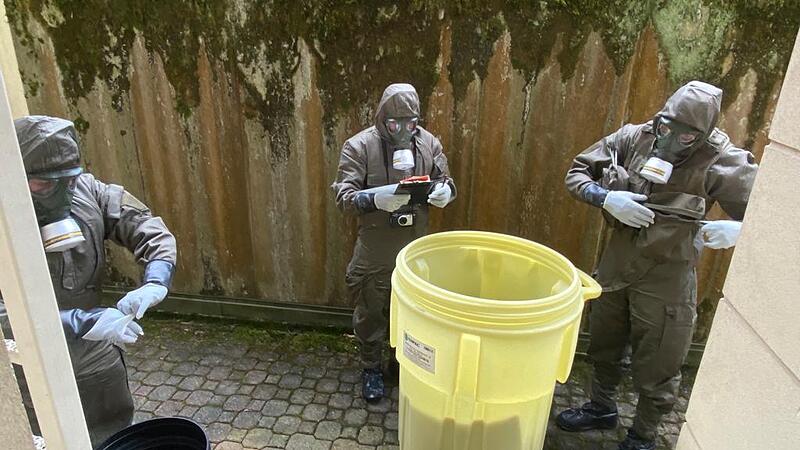Image: Armed Forces
War relics – phosgene was used as a war gas in World War I – are probably not, they are more likely to come from the chemical industry, the police said on Monday. A chemist from the Johannes Kepler University told the OÖ Nachrichten.
The two pressurized gas bottles labeled “Phosgene” were discovered in a box in a waste disposal company’s warehouse. The managing director took her to the Gmunden police station on Friday. The executive set up a restricted area with a diameter of 25 meters – or 50 meters downwind. Then experts in protective gear took measurements and found that the containers were tight. If they hadn’t been, the restricted area would have had to be expanded considerably, explained district inspector Markus Kreilmeier.
Then the containers were weighed. This analysis showed that one bottle contained 438 grams and the other 232 grams of the poison gas. An NBC defense platoon from the German army then took over the proper recovery of the gas pressure cylinders, secured them and brought them to the NBC defense center. There they are to be analyzed and the gas destroyed safely.
The dangers of phosgene
Phosgene was used in the First World War as a “green cross” weapon (the phosgene grenades were marked with a green cross), today this gas is only known as an intermediate product from the manufacture of medicines and insecticides. “The smallest amounts are sufficient for a fatal injury,” said army spokesman Pierre Kugelweis after the discovery became known at the weekend. The insidious thing about the mixture is that it reacts with water in the lungs and hydrochloric acid is formed. This would burn a person internally, which would mean an agonizing death.
Disposal is subject to strict rules
Kreilmeier does not assume that the phosgene is a war relic, the bottles are more recent. They would most likely come from the chemical industry. However, he assumes that there really is phosgene in the containers because the relevant hazard labels were also on them. Investigations into the question of how the containers got onto the company premises are still ongoing, as disposal is subject to strict rules.
Source: Nachrichten




